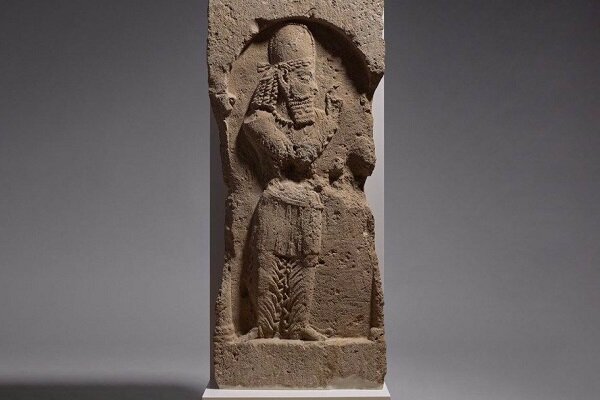
In a post on his Twitter account on Friday, Mehdi Hosseini Matin said the Iranian embassy had taken delivery of the antiquity, dating to the period of the Sasanian Empire (AD 224-651), after it was put on display at the British Museum for three months.
“The statue of the Sasanid soldier, which had been smuggled into Britain, was displayed temporarily at the British Museum for three months after Iran’s ownership was proven,” Hosseini Matin wrote.
“Today, the precious ancient work was officially delivered to the embassy of the Islamic Republic of Iran in London. God willing, it will be sent soon to the beloved homeland.”
The ancient treasure had been seized by the British border police in January 2016 at Stansted Airport near London.
It was heading for the black market in Britain when it was confiscated by British border police officers upon growing suspicious of its haphazard packaging.
The unique relief, which is over one meter in height, depicts an imposing male figure. It was hacked out of living rock or rock that has been carved in situ.
Experts believe the artifact, reportedly worth more than £30 million, may have come from Iran’s southwestern Fars Province where a majority of Sasanian rock reliefs exist.
Dr. St John Simpson, a senior curator and archaeologist in the British Museum’s department of the Middle East, said previously that the thieves had used “an angle grinder to slice diagonally behind it and across the top. It was then packed in an incredibly bad manner, in a small, almost unpadded crate held together with nails.”
“We almost never come across a case of something being cut out of the ‘living rock’. That’s a level of brutalism that surpasses anything,” he said.
The artifact had broken into two due to its haphazard packaging, but it was repaired by conservators.
Meanwhile, no arrests have been made so far, even though the case was investigated by Interpol and the National Crime Agency, and despite the fact that the packaging stipulated the sender, recipient and destination.
MP/PressTV




